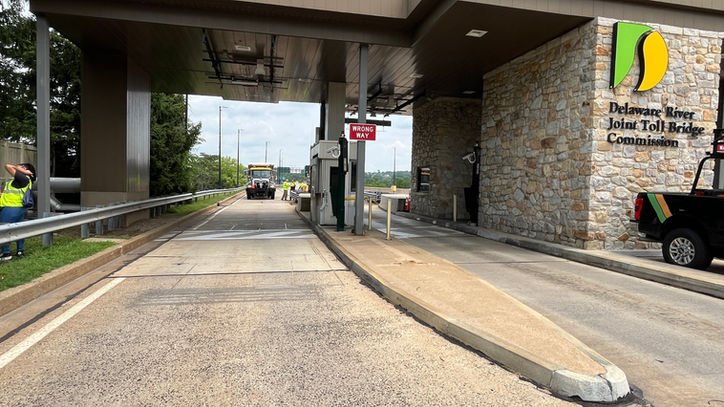.png)
PROJECT
New Hope – Lambertville Toll Bridge Electronic Tolling Conversion
Bucks County, PA & Hunterdon, NJ
CLIENT
Delaware River Joint Toll Bridge Commission (DRJTBC)
SERVICES
Lighting Plan and Report
Electronic Surveillance Systems
Traffic Control Plan
Maintenance and Protection of Traffic Specifications
Cost Estimates
The Delaware River Joint Toll Bridge Commission is converting from traditional stop-and-go brick and mortar tolling facilities located along the Delaware River to cashless all-electronic tolling (AET) facilities with overhead gantries. Vehicles pass through a series of specialized sensors along a tangent section of roadway at expressway posted speeds to determine a vehicle’s height and number of axels. Overhead E-ZPass readers capture vehicles with transponders and cameras take pictures of license plates to collect tolls via pre-paid accounts or Toll-By-Plate invoices. The conversion to ORT facilities will improve safety, mobility, and reduce environmental impacts for all system users by eliminating or reducing weaving, queues, delays, fuel consumption, emissions, and site footprints typically experienced at traditional tolling facilities.
As part of the system-wide conversion, Drive is responsible for traffic control development, roadway lighting reconstruction, and replacement of electronic surveillance systems equipment impacted by the removal of the existing tolling facility footprint. The new AET facility is to be completed and operational in 2025, with opening bids for the project anticipated to occur in January 2025.
Drive’s responsibilities include project management, attendance at client and stakeholder meetings, preliminary and final design for lighting, ESS, and maintenance and protection of traffic control plans, specifications, and cost estimates for the project. PennDOT standards, FHWA’s Manual on Uniform Traffic Control Devices (MUTCD), National Electrical Code (NEC), and historical cost data were used to develop the contract documents. Typical sequence of construction consists of two (2) stages. Stage one includes the installation of the new AET gantry and testing using long-term lane closures. Stage two includes demolition of the existing tolling infrastructure and reconstruction of the site to eliminate excess pavement width and reconfiguration of the roadway for operational and safety improvements.




